
The 1974 Super Outbreak was the second-largest tornado outbreak on record for a single 24-hour period, just behind the 2011 Super Outbreak. It was also the most violent tornado outbreak ever recorded, with 30 F4/F5 tornadoes confirmed. From April 3–4, 1974, there were 148 tornadoes confirmed in 13 U.S. states and the Canadian province of Ontario. In the United States, tornadoes struck Illinois, Indiana, Michigan, Ohio, Kentucky, Tennessee, Alabama, Mississippi, Georgia, North Carolina, Virginia, West Virginia, and New York. The outbreak caused roughly $843 million USD in damage, with more than $600 million occurring in the United States. The outbreak extensively damaged approximately 900 sq mi (2,331 km2) along a total combined path length of 2,600 mi (4,184 km). At one point, as many as 15 separate tornadoes were occurring simultaneously.

The 1985 United States–Canada tornado outbreak, referred to as the Barrie tornado outbreak in Canada, was a major tornado outbreak that occurred in Ohio, Pennsylvania, New York, and Ontario, on May 31, 1985. In all 44 tornadoes were counted including 14 in Ontario, Canada. It is the largest and most intense tornado outbreak ever to hit this region, and the worst tornado outbreak in Pennsylvania history in terms of deaths and destruction.
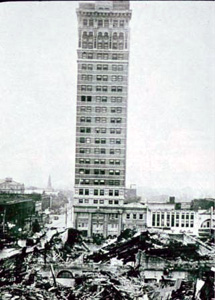
A deadly series of at least 33 tornadoes hit at least 10 different U.S. states on May 9–11, 1953. Tornadoes appeared daily from Minnesota in the north to Texas in the south. The strongest and deadliest tornado was a powerful F5 tornado that struck Waco, Texas on May 11, causing 114 of the 144 deaths in the outbreak. Alongside the 1902 Goliad tornado, it was the deadliest tornado in Texas history and is the 11th deadliest tornado in U.S. history. The tornado's winds demolished more than 600 houses, 1,000 other structures, and over 2,000 vehicles. 597 injuries occurred, and many survivors had to wait more than 14 hours for rescue. The destruction dispelled a myth that the geography of the region spared Waco from tornadoes, and along with other deadly tornadoes in 1953, the Waco disaster was a catalyst for advances in understanding the link between tornadoes and radar-detected hook echoes. It also generated support for improved civil defense systems, the formation of weather radar networks, and improved communications between stakeholders such as meteorologists, local officials, and the public.

On the evening of June 20, 1957, a violent and deadly F5 tornado struck the north side and downtown area of Fargo, North Dakota as well as the area north of Moorhead, Minnesota. It was part of a family of five devastating tornadoes produced by one supercell over the course of 3.5 hours, although they are listed as one continuous tornado. The tornado family started in North Dakota, traveled 27.4 miles (44.1 km) to the Minnesota border before crossing it and continuing for another 25 miles (40 km) for a total track length of 52.4 miles (84.3 km). Additionally, at its widest point, the damage swath reached 500 yards (460 m) across. A total of 10 people were killed, making it the deadliest tornado in North Dakota history. Meanwhile, 103 others were injured, and damage was estimated at $25.25 million. It was part of a larger outbreak sequence of 23 tornadoes that affected the Midwest and Great Plains.
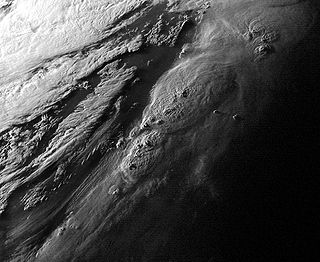
From May 4–6, 2007, a major and damaging tornado outbreak significantly affected portions of the Central United States. The most destructive tornado in the outbreak occurred on the evening of May 4 in western Kansas, where about 95% of the city of Greensburg in Kiowa County was destroyed by an EF5 tornado, the first of such intensity since the 1999 Bridge Creek–Moore tornado. The supercell killed 13 people, including 11 in Greensburg and two from separate tornadoes. At least 60 people were injured in Greensburg alone. It was the strongest tornado of an outbreak which included several other tornadoes reported across Oklahoma, Colorado, Kansas and South Dakota that occurred on the same night.
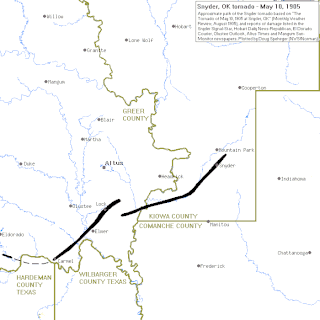
The 1905 Snyder, Oklahoma, tornado was a powerful tornado that struck the town of Snyder, Oklahoma, in Kiowa County on Wednesday, May 10, 1905. The event was one of the worst natural disasters ever to hit the state of Oklahoma. The cyclone killed 97 people, making it the second most deadly tornado in Oklahoma history. The tornado was part of a larger, multiple-day tornado outbreak that hit several states across the Midwestern United States, including Kansas, Oklahoma, and Missouri.

The Tornado outbreak of June 7–8, 1984 was a significant severe weather and tornado event that took place across the central United States from North Dakota to Kansas on June 7–8, 1984. The tornado outbreak produced several significant tornadoes including an F5 tornado which traveled through Barneveld, Wisconsin, in the early hours of June 8, 1984. The entire outbreak killed at least 13 people across three states including 9 in Barneveld alone.

On February 21–22, 1971, a devastating tornado outbreak, colloquially known as the Mississippi Delta outbreak, struck portions of the Lower Mississippi and Ohio River valleys in the Southern and Midwestern United States. The outbreak generated strong tornadoes from Texas to Ohio and North Carolina. The two-day severe weather episode produced at least 19 tornadoes, and probably several more, mostly brief events in rural areas; killed 123 people across three states; and wrecked entire communities in the state of Mississippi. The strongest tornado of the outbreak was an F5 that developed in Louisiana and crossed into Mississippi, killing 48 people, while the deadliest was an F4 that tracked across Mississippi and entered Tennessee, causing 58 fatalities in the former state. The former tornado remains the only F5 on record in Louisiana, while the latter is the deadliest on record in Mississippi since 1950. A deadly F4 also affected other parts of Mississippi, causing 13 more deaths. Other deadly tornadoes included a pair of F3s—one each in Mississippi and North Carolina, respectively—that collectively killed five people.
On June 3–4, 1958, a destructive tornado outbreak affected the Upper Midwestern United States. It was the deadliest tornado outbreak in the U.S. state of Wisconsin since records began in 1950. The outbreak, which initiated in Central Minnesota, killed at least 28 people, all of whom perished in Northwestern Wisconsin. The outbreak generated a long-lived tornado family that produced four intense tornadoes across the Eau Claire–Chippewa Falls metropolitan area, primarily along and near the Chippewa and Eau Claire rivers. The deadliest tornado of the outbreak was a destructive F5 that killed 21 people and injured 110 others in and near Colfax, Wisconsin.

The tornado outbreak sequence of May 1896 was a series of violent and deadly tornado outbreaks that struck much of the Central and Southern United States from May 15 to 28, 1896. It is considered one of the worst tornado outbreak sequences on record with tornado expert Tom Grazulis stating that the week of May 24–28 was "perhaps the most violent single week of tornado activity in United States history". There were four particularly notable tornado outbreaks during the two-week period. It produced three F5 tornadoes as well as the third deadliest tornado ever in United States history. A total of 484 people were killed during the entire outbreak sequence by at least 38 different tornadoes which struck Texas, Oklahoma, Kansas, Nebraska, Kentucky, Iowa, Illinois, Michigan, Missouri, Pennsylvania, New Jersey and Maryland.
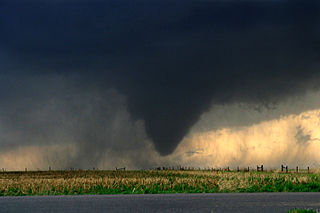
A multi-day tornado outbreak affected the central plains of the United States from May 22–27, 2008. It was also one of the largest continuous tornado outbreaks on record. A total of 173 tornadoes were confirmed, with the most intense activity occurring across the Great Plains. One person was killed when a large wedge tornado struck Windsor, Colorado, and two more deaths were reported in Pratt County, Kansas. One person was also killed near Hugo, Minnesota on May 25 and nine were killed by an EF5 tornado that destroyed most of Parkersburg, Iowa and a small subdivision of New Hartford, Iowa. Another fatality, caused by lightning related to the storms, occurred in central Kansas.

Tornadoes are more common in the United States than in any other country or state. The United States receives more than 1,200 tornadoes annually—four times the amount seen in Europe. Violent tornadoes—those rated EF4 or EF5 on the Enhanced Fujita Scale—occur more often in the United States than in any other country.

The 1953 Worcester tornado was an extremely powerful and destructive tornado that struck the city of Worcester, Massachusetts and surrounding areas on Tuesday, June 9, 1953, the final day of the Flint–Worcester tornado outbreak sequence. It stayed on the ground for 48 miles (77 km) and 78 minutes. The tornado injured 1,288 people and killed 94, making it one of the deadliest tornadoes in U.S. history and the deadliest tornado to ever strike New England. A total of 4,000 buildings were damaged or destroyed and, per National Weather Service estimates, 10,000 people were left homeless. The tornado caused $52.193 million which, at the time, was the costliest tornado ever recorded.

The 2011 Super Outbreak was the largest, costliest, and one of the deadliest tornado outbreaks ever recorded, taking place in the Southern, Midwestern, and Northeastern United States from April 25 to 28, 2011, leaving catastrophic destruction in its wake. Over 175 tornadoes struck Alabama, Mississippi, and Tennessee, which were the most severely damaged states. Other destructive tornadoes occurred in Arkansas, Georgia, Kentucky, Louisiana, New York, and Virginia, with storms also affecting other states in the Southern and Eastern United States. In total, 360 tornadoes were confirmed by NOAA's National Weather Service (NWS) and Government of Canada's Environment Canada in 21 states from Texas to New York to southern Canada. Widespread and destructive tornadoes occurred on each day of the outbreak. April 27 was the most active day, with a record 216 tornadoes touching down that day from midnight to midnight CDT. Four of the tornadoes were rated EF5, which is the highest ranking on the Enhanced Fujita scale; typically these tornadoes are recorded no more than once a year.
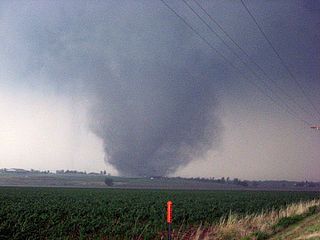
From May 21 to May 26, 2011, one of the largest tornado outbreaks on record affected the Midwestern and Southern regions of the United States. A six-day tornado outbreak sequence, most of the tornadoes developed in a corridor from Lake Superior southwest to central Texas, while isolated tornadoes occurred in other areas. An especially destructive EF5 tornado destroyed one-third of Joplin, Missouri, resulting in 158 deaths and over 1,000 injuries. The Joplin tornado was the deadliest in the United States since April 9, 1947, when an intense tornado killed 181 in the Woodward, Oklahoma, area. Tornado-related deaths also occurred in Arkansas, Kansas, Minnesota, and Oklahoma. Overall, the tornado outbreak resulted in 186 deaths, 8 of those non-tornadic, making it second only to the 2011 Super Outbreak as the deadliest since 1974. It was the second costliest tornado outbreak in United States history behind that same April 2011 outbreak, with insured damage estimated at $4–7 billion.

The 2011 Joplin tornado was a large and devastating multiple-vortex tornado that struck Joplin, Missouri, United States, on the evening of Sunday, May 22, 2011. Part of a larger late-May tornado outbreak, the EF5 tornado began just west of Joplin and intensified very quickly, reaching a maximum width of nearly one mile (1.6 km) during its path through the southern part of the city. The tornado tracked eastward through Joplin, and then continued across Interstate 44 into rural portions of Jasper and Newton counties, weakening before it dissipated.

The 2011 Hackleburg–Phil Campbell tornado was an extremely deadly, violent, and long-tracked EF5 wedge tornado that devastated several towns in rural northern Alabama, before tearing through the northern suburbs of Huntsville and causing damage in rural portions of southern Tennessee on the afternoon and early evening of April 27, 2011. It was the deadliest tornado of the 2011 Super Outbreak, the largest tornado outbreak in United States history. The tornado reached a maximum width of 1.25 miles (2.01 km) and was estimated to have had peak winds of 210 mph (340 km/h). The tornado killed 72 people, making it the deadliest tornado in Alabama history, and injured at least 145 others. At the time, it was the deadliest tornado to strike the United States since the 1955 Udall, Kansas, tornado.

This page documents the tornadoes and tornado outbreaks of 1974, primarily in the United States. Most tornadoes form in the U.S., although some events may take place internationally. Tornado statistics for older years like this often appear significantly lower than modern years due to fewer reports or confirmed tornadoes.

This page documents the tornadoes and tornado outbreaks of 1947, primarily in the United States. Most recorded tornadoes form in the U.S., although some events may take place internationally. Tornado statistics for older years like this often appear significantly lower than modern years due to fewer reports or confirmed tornadoes.

The 2008 Parkersburg, Iowa tornado was an extremely powerful EF5 wedge tornado that devastated portions of northeast Iowa, most notably the town of Parkersburg, Iowa during the afternoon of May 25, 2008, resulting in catastrophic damage and nine fatalities.




















